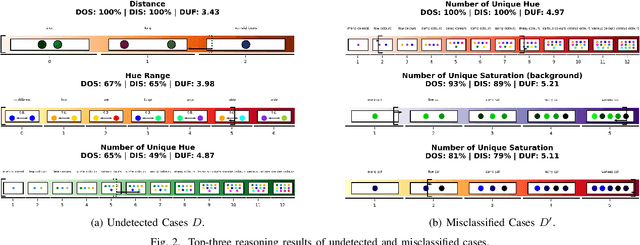Sarah Bugby
Efficient Retrieval of Images with Irregular Patterns using Morphological Image Analysis: Applications to Industrial and Healthcare datasets
Oct 10, 2023



Abstract:Image retrieval is the process of searching and retrieving images from a database based on their visual content and features. Recently, much attention has been directed towards the retrieval of irregular patterns within industrial or medical images by extracting features from the images, such as deep features, colour-based features, shape-based features and local features. This has applications across a spectrum of industries, including fault inspection, disease diagnosis, and maintenance prediction. This paper proposes an image retrieval framework to search for images containing similar irregular patterns by extracting a set of morphological features (DefChars) from images; the datasets employed in this paper contain wind turbine blade images with defects, chest computerised tomography scans with COVID-19 infection, heatsink images with defects, and lake ice images. The proposed framework was evaluated with different feature extraction methods (DefChars, resized raw image, local binary pattern, and scale-invariant feature transforms) and distance metrics to determine the most efficient parameters in terms of retrieval performance across datasets. The retrieval results show that the proposed framework using the DefChars and the Manhattan distance metric achieves a mean average precision of 80% and a low standard deviation of 0.09 across classes of irregular patterns, outperforming alternative feature-metric combinations across all datasets. Furthermore, the low standard deviation between each class highlights DefChars' capability for a reliable image retrieval task, even in the presence of class imbalances or small-sized datasets.
ForestMonkey: Toolkit for Reasoning with AI-based Defect Detection and Classification Models
Jul 25, 2023



Abstract:Artificial intelligence (AI) reasoning and explainable AI (XAI) tasks have gained popularity recently, enabling users to explain the predictions or decision processes of AI models. This paper introduces Forest Monkey (FM), a toolkit designed to reason the outputs of any AI-based defect detection and/or classification model with data explainability. Implemented as a Python package, FM takes input in the form of dataset folder paths (including original images, ground truth labels, and predicted labels) and provides a set of charts and a text file to illustrate the reasoning results and suggest possible improvements. The FM toolkit consists of processes such as feature extraction from predictions to reasoning targets, feature extraction from images to defect characteristics, and a decision tree-based AI-Reasoner. Additionally, this paper investigates the time performance of the FM toolkit when applied to four AI models with different datasets. Lastly, a tutorial is provided to guide users in performing reasoning tasks using the FM toolkit.
Morphological Image Analysis and Feature Extraction for Reasoning with AI-based Defect Detection and Classification Models
Jul 24, 2023



Abstract:As the use of artificial intelligent (AI) models becomes more prevalent in industries such as engineering and manufacturing, it is essential that these models provide transparent reasoning behind their predictions. This paper proposes the AI-Reasoner, which extracts the morphological characteristics of defects (DefChars) from images and utilises decision trees to reason with the DefChar values. Thereafter, the AI-Reasoner exports visualisations (i.e. charts) and textual explanations to provide insights into outputs made by masked-based defect detection and classification models. It also provides effective mitigation strategies to enhance data pre-processing and overall model performance. The AI-Reasoner was tested on explaining the outputs of an IE Mask R-CNN model using a set of 366 images containing defects. The results demonstrated its effectiveness in explaining the IE Mask R-CNN model's predictions. Overall, the proposed AI-Reasoner provides a solution for improving the performance of AI models in industrial applications that require defect analysis.
 Add to Chrome
Add to Chrome Add to Firefox
Add to Firefox Add to Edge
Add to Edge